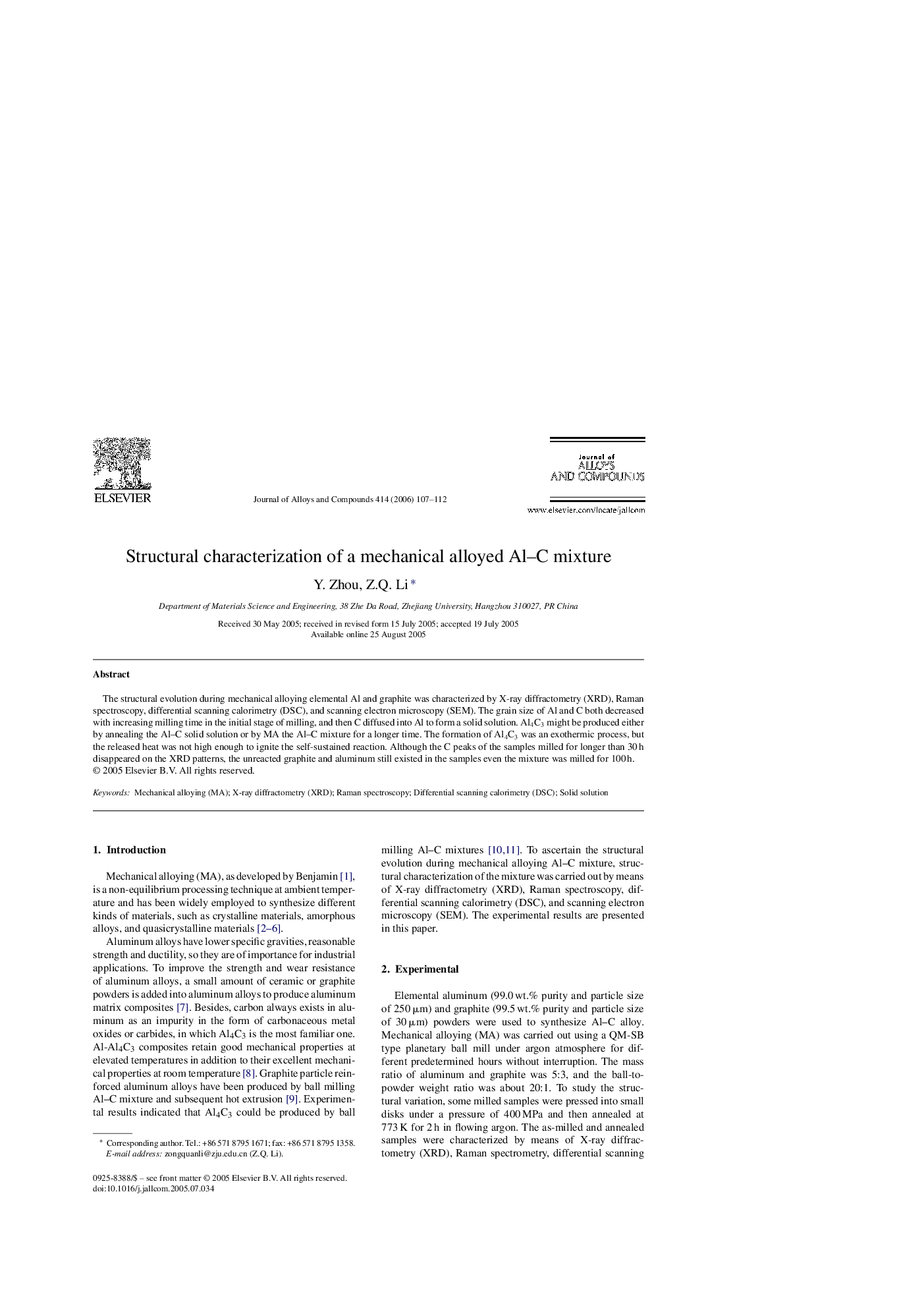| Article ID | Journal | Published Year | Pages | File Type |
|---|---|---|---|---|
| 1627706 | Journal of Alloys and Compounds | 2006 | 6 Pages |
The structural evolution during mechanical alloying elemental Al and graphite was characterized by X-ray diffractometry (XRD), Raman spectroscopy, differential scanning calorimetry (DSC), and scanning electron microscopy (SEM). The grain size of Al and C both decreased with increasing milling time in the initial stage of milling, and then C diffused into Al to form a solid solution. Al4C3 might be produced either by annealing the Al–C solid solution or by MA the Al–C mixture for a longer time. The formation of Al4C3 was an exothermic process, but the released heat was not high enough to ignite the self-sustained reaction. Although the C peaks of the samples milled for longer than 30 h disappeared on the XRD patterns, the unreacted graphite and aluminum still existed in the samples even the mixture was milled for 100 h.
